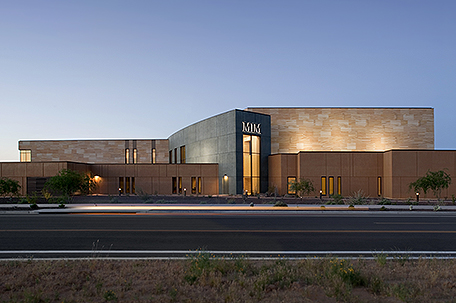
Renée S. Gordon
“Polish comes from the cities; wisdom from the desert.”
–Frank Herbert
The first nonindigenous people to enter the Phoenix area came on a quest for golden cities. The story appears to have originated from four Spanish conquistadors who survived a shipwreck off the coast of Galveston and walked back to Mexico City. They claimed to have sighted “Cibola”, the Seven Cities of Gold. Estevanico, the one African survivor, was selected to serve as trailblazer, guide and interpreter for a party led by Friar Marcos de Niza in 1539. The Zuni in New Mexico killed Estevanico but the friar returned and assured the Spanish that he had sighted the city, with walls of gold and buildings filled with wealth, from a distance. The search for gold began in earnest
The Spanish were unsuccessful in locating the treasure they sought, as were the Mexicans who followed them in the 18th-century. In 1858 Jake Snively discovered gold at Pinos Altos and four years later former mountain man, Pauline Weaver, staked a claim that would jumpstart a huge immigration. Henry Wickenburg arrived in the region around 1862 and shortly thereafter discovered the Vulture Mine. Wickenburg sold the controlling share of his claim and the technologically advanced Vulture Mining Company was founded.
In December of 1868, Wickenburg used some of his money to back the Swilling Irrigation Canal Company. The company, using some of the ancient canals, brought water into the desert from the Salt River. At that same time a community called Phoenix came into being.
A creative way to obtain a crash course on the Native American, pioneer and gold mining history of the area is to visit Goldfield Mines on the edge of the Superstition Mountains. The town was one of the largest in the area and originally founded in 1893. At its height it had a population of 5,000 with a school, boarding house, post office and three bawdy houses. Miners earned $3 per day and had a life expectancy of 30 to 35. The mines yielded $1.5-million ($40,843,577 in today’s dollars).
When the mines played out in 1898 the population dropped to 1,300 in one-month and then to zero. Ultimately, the town burned to the ground and in the 1980s was reconstructed on the footprint of the original and filled with original mining machinery and western artifacts. During construction, bones were found and are now part of The Tomb of the Unknown Prospector, a monument to all who toiled there, located at the entrance. The recreated town offers tours including Goldfield Mine, LuLu’s Bordello, Gold Panning and a narrated ride aboard the Goldfield Narrow-Gauge Railroad. Gunfights and carriage rides are scheduled throughout the day. www.goldfieldghosttown.com
Goldfield Superstition Museum encompasses 12.5-acres and relates the history of the town and the surrounding area. Also on-site is a barn, one of the only surviving structures from Apacheland Movie Ranch, a western film set that appeared in numerous productions such as “Rifleman,” “Charro,“ Have Gun Will Travel,” and “Wanted Dead or Alive.” www.superstitionmountainmuseum.org
An Apache Trail Tour is a mandatory experience if you want to make the most out of your trip. There are a variety of narrated jeep tours to choose from, ranging from 60-minutes to eight hours, offered seven days a week. An excellent overview tour takes you into the Superstition Mountains on the Apache Trail, the nation’s oldest highway, with a chain of lakes, scenic vistas, wildlife viewing and the tallest cactus in the world. When it is raining riders are treated to the sight of mountain waterfalls. www.apachetrailtours.com
The extremely scenic Apache Trail has been used at least since 900 AD when Native Americans used it for trade, migration and raids. Settlers used it as a wagon road as well as the US Army and named it the Tonto Trail. In August of 1903 construction began on the Tonto Wagon Road and was completed at a cost of $551,000 in 1905. The road was originally 62-miles and became known in 1915 as the Apache Trail for marketing purposes and because it was largely built with Apache and Pima labor. It was designated Arizona’s first historic highway in 1987.
Tortilla Flats, population six, is an old freight town located along the trail. Most residents abandoned it when the land became part of Tonto National Forest. Visitors can shop, dine and take in the view. www.tortillaflataz.com
Legend has it that while serving in the region the African American soldiers of the 9th, 10th, 24th and 25th regiments were given the name “Buffalo Soldiers” by the natives. The Buffalo Soldiers were stationed in Arizona for 18 years and at one point Henry Flipper, the first black graduate of West Point, was among them. One of the main actions they participated in was the pursuit and capture of Geronimo.
One of the most enduring legends to come out of the Superstition Mountains is that of the Lost Dutchman Mine. Jacob Waltz arrived in America in 1845 from Germany and gradually made his way to Arizona in 1868 on a quest for gold. He hooked up with another German, Jacob Weiser, and the two mined in the mountains. Soon they began to appear in town with gold. For years, they would appear with gold until eventually Weiser vanished. Many people asked where the mine was and some attempted to follow but they were unsuccessful. In early 1891, Waltz developed pneumonia and was taken in by a widow. He promised to share the location of his mine with her but died before that happened. Today people continue to seek the Lost Dutchman Mine.
More than 2,400-ft high in the mountains is a rocky outcropping that overhangs the infamous Skeleton Cave now considered a sacred site by Native Americans. The cave itself is approximately 118-ft. wide, 40-ft. deep 25 to 1-ft. in height. On December 28, 1872, the 5th Cavalry led by Gen. George Crook attacked the 110 Apache and Yavapai warriors who had taken shelter in the cave. They opened fire killing 75 and capturing 34. After the Skeleton Cave Massacre the bodies were abandoned in the cave. Through the years the cave was looted and forgotten. In 1906, it was rediscovered and in 1933 the remains were taken by the Yavapai and reinterred at Fort McDowell.
The Desert Botanical Garden opened in 1939 to research, preserve and protect the desert culture while educating the public. The garden is viewed by selecting from five thematic trails each staffed with docents who provide demonstrations and interpretations. The entry garden functions as a transition point from city to desert. There are 1,400 plant species, many so obscure that they can only be seen on a strenuous hike or in the Desert Botanical Garden.
“The Plants and People of the Sonoran Desert” is the most historical of the routes. It highlights the indigenous plants and people of the desert and allows visitors to enter a traditional roundhouse and be immersed in the Native American lifestyle.
“Chihuly in the Garden” is on special exhibit throughout the garden until May 18, 2014. www.dbg.org
Joe’s Farm Grill has been featured on Food Network’s “Diners, Drive-ins and Dives.” This menu driven restaurant creates dishes made with common food using quality ingredients. The restaurant is situated inside what was once the 1996 Johnson residence with the kitchen where the bedrooms once were. The eatery is part of a larger community designed to retain the farming heritage and embrace modern urbanism. The complex consists of housing, schools, a managed care facility, a 15 acre farm with 6 acrescertified organic and a 43 plot community garden. The food here is wonderful and the ice cream and shakes are divine. www.joesfarmgrill.com
Everyone who has an appreciation of any aspect of music must visit the Musical Instrument Museum (MIM) and be awed. This incredible museum is the only global music museum in the world and showcases instruments from every country and territory in the world. The permanent collection consists of 15,000 objects, 6,000 of which are on display in more than 360 immersive exhibits.
MIM was established in 2010 on 20 acres. The structure is made of sandstone that is designed to blend into the environment. “El Rio,” the main passageway, provides access to individual galleries and the staircase to the second level. Audio tours are self-guided and begin on the first floor with the Mechanical Music Gallery and the Conservation Lab. On this floor the highlights include special exhibits, the 4-5,000-year old paigu, the oldest instrument in the museum and the 15 ft. octobass used in “The Hunger Games.” The bass plays notes lower than the human ear can hear.
Five Geographical Galleries are located on the second-floor. The Africa and Middle East Gallery features 50 sub-Saharan and more than 20 North African and Middle Eastern nations. Each display includes instruments, video, audio and cultural apparel.
“Women Who Rock: Vision, Passion, Power,” is on special exhibition until April 20, 2014. The exhibit, created by the Rock and Roll Hall of Fame and Museum, focuses on more than 70 iconic female artists who were engines of change socially and culturally through their music. There are eight areas with 250 artifacts from the trailblazers, Ma Rainey, Bessie Smith, Billie Holiday, Mahalia Jackson and the Carter Family to Gwen Stefani, Rihanna and Lady Gaga. Two of the biggest draws here are Rihanna’s stage costume and Lady Gaga’s 2010 MTV Awards “Meat Dress.”
A visit to MIM is an all day affair and luckily Café Allegro, serving global cuisine, is on the premises. This museum is a unique, entertaining and educational experience. www.mim.org
Sassi Italian Restaurant is a Phoenix legend and has breathtaking views and a 3,000-bottle wine cellar. The Mediterranean inspired Italian menu contains the freshest ingredients, many grown on site. Dining in an Italian villa is one way to enhance your Phoenix adventure. www.sassi.biz
We have explored the Phoenix area on land and now we are going to take flight with Hot Air Expeditions. The effect of gliding silently over the desert landscape is absolutely unparalleled. The handcrafted baskets can accommodate from two to 24 people and include a breakfast buffet, certificate of participation and champagne toast. Ballooning began in the 18th-century in France and at that time champagne was only for royalty. When balloons landed the landowners were greeted with champagne to prove that the balloon contained a messenger of the king. www.hotairexpeditions.com
Phoenix still beckons those who seek golden sunshine and precious experiences. There are nonstop flights from Philadelphia International and you can step out of the snow and into the sunshine in a few hours. Check out all there is to offer and go for the gold. www.visitphoenix.com
I wish you smooth travels!
TRAVEL TIPS:
On Saturday, March 1, 2014 the Penn Museum will launch its newest exhibition, “Native American Voices: The People—Here and Now.” The installation is the creation of more than 80 Native American contributors and showcases more than 250 Native American objects culled from the museum’s collection. As always there will be an eclectic schedule of accompanying activities, lectures and programs. www.penn.museum/upcoming-exhibits
It’s back! New York Restaurant Week Winter 2014 takes place from February 17th-March 7th. This is an opportunity to dine in more than 250 of NY’s best restaurants at affordable rates. Prix-fixe lunches are $25 and three-course prix-fixe dinners are offered for $38 Monday to Friday. Full details are online. www.nycgo.com/restaurantweek.
Even though we all know everyday is woman’s day, March has been designated Women’s History Month. The National Constitution Center has scheduled a series of exhibitions and lectures will highlight both the achievers and their achievements. One of the most innovative programs is “Decoding the Lyrics: Bad Romance: Women’s Suffrage,” reinterpreting the lyrics of Lady Gaga’s song to relate the story of America’s Women’s Suffrage Movement. www.constitutioncenter.org.
White Sulpher Springs, West Virginia’s Greenbrier Hotel is honoring Women’s History Month by hosting a Women’s Weekend from March 27-30. The weekend, part of the hotel’s Discovery Series, will be filled with fitness and empowerment activities and power shopping. The weekend culminates an evening gala. www.greenbrier.com/womensweekend
“The Costumes of Downton Abbey” Exhibition opens at Winterthur Museum, Garden & Library in Delaware on March 1, 2014 and closes on January 4, 2015. Forty costumes will be on display in settings with photographs and videos. Timed tickets must be purchased in advance. www.winterthur.org















Leave a Comment